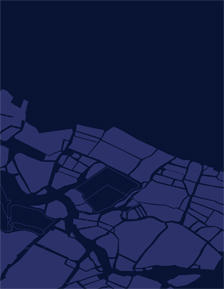Bodies of Water
water in the city: tanks, canals, wells and ecology

Students: Annabel Cremer, Hilla Rudanko
Location: Group work in Kolkata
Date: November, 2008
Type: Research project, student work, Bodies of Water
Background
Water has always been a central element of urbanism in India. The choice of locations for canals, wells, tanks, ghats and other bodies of urban water has always been very conscious and strategic. Fulfilling utilitarian purposes such as being places for transporting, drinking, bathing, and washing, urban water has also been employed to create micro climates, cooling the surrounding areas during summer heat. Furthermore, water takes on a very important ritual dimension in daily life and during annual holidays, thereby adding a ceremonial structure to the urban fabric. With the examples of the step-wells and the ghats to name just two, a very sophisticated and intricate architecture of water has been developed over time on the Indian subcontinent, which is probably unsurpassed worldwide.
Themes
Kolkata is dotted with tanks and wells. Being located in one of the most dynamic hydrological locations in the world, at one of the large distributaries of the Ganges, within the Bengal wetlands, just north of the Sundarbans, close to the Bay of Bengal, in the area of frequent cyclones and tropical storms, a mere few inches above sea level and in the midst of an intense monsoon zone, Kolkata is entrenched in water from all sides, directions and dimensions. Whereas the separation between the bodies of urban water and the built-up area within the city is precisely defined and formalized, during monsoon this dividing lines blurs heavily, with large parts of the city becoming drenched in water. ....
Project
Is there an architecture of the monsoon? What role do the tanks and wells still play within the urban fabric? Are they still being used? How does Kolkata react to the monsoon architecturally and urbanistically? Does it take a rising water level into consideration? What is the role of the wetlands for the city? The salt lakes in the east of the city harbour an extensive range of fauna and flora, but are under severe pressure of urban development. Document their use and their precariousness, using a specific case study. Study the relationship between the urban geography and the availability of fresh water, the level of hygiene and quality of sanitation. How do the water tanks and salt lakes create not only an urban geography, but also an economical landscape?
Download the Book PDF

